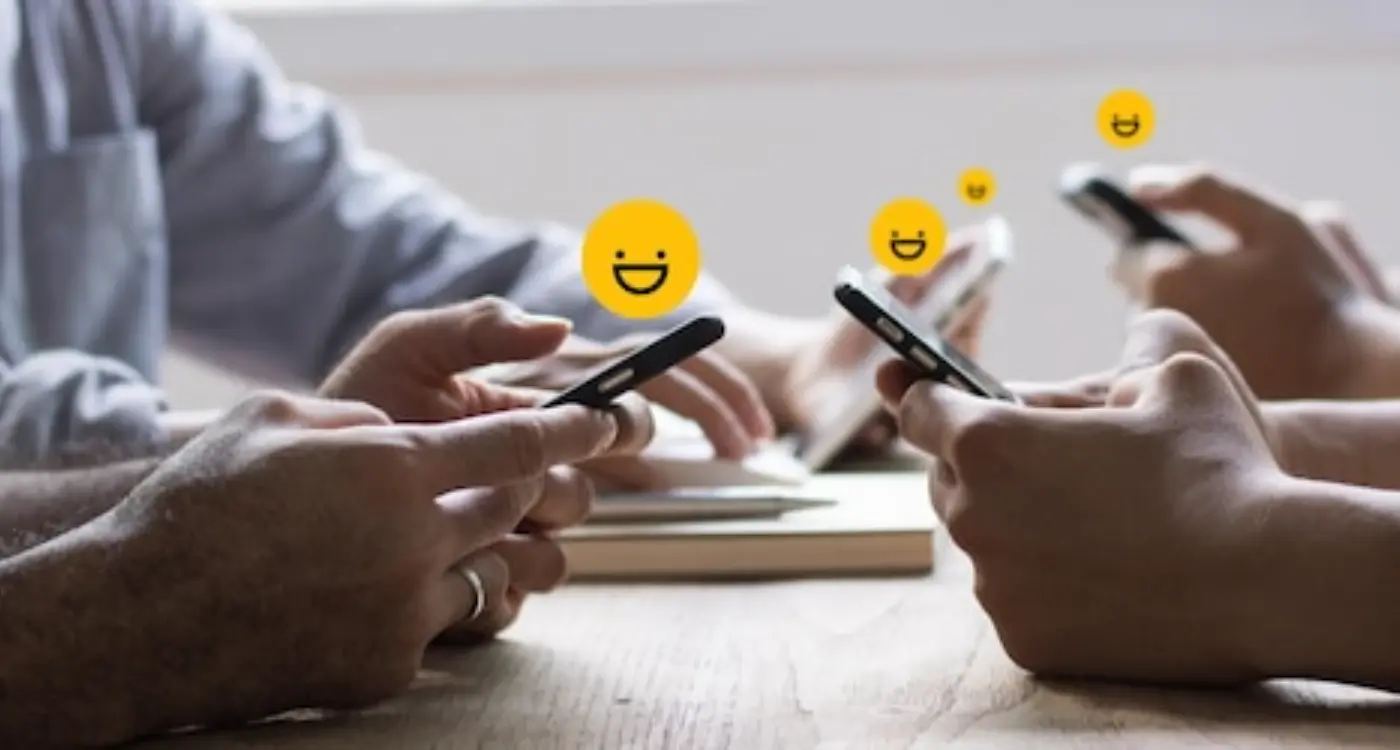How Do I Use Data to Predict Which Users Will Stop Using My App?
An event planning app launches with fantastic reviews and thousands of downloads in its first month. Users love the interface, the features work perfectly, and everything seems brilliant. But then something odd happens—after that initial surge, people start disappearing. Not dramatically, just quietly slipping away. By month three, only 15% of those original users are still actively planning events. The founders are scratching their heads, wondering what went wrong.
This scenario plays out thousands of times across the app ecosystem. You build something people want, they download it, use it a few times, then... nothing. It's maddening because you know your app provides real value, but users are walking away before they discover it. The question isn't whether this will happen to your app—it's when, and whether you'll see it coming.
The cost of acquiring a new user is typically five to seven times higher than retaining an existing one, making churn prediction one of the most valuable skills in mobile app development.
Here's the thing though—users don't just vanish randomly. They leave breadcrumbs. Digital signals that show they're getting frustrated, losing interest, or finding your app irrelevant to their needs. The problem is most app developers don't know what to look for or how to interpret these warning signs. That's where churn prediction comes in. By analysing user behaviour data, you can spot patterns that indicate someone's about to leave, often weeks before they actually do. This gives you a window—sometimes small, sometimes generous—to intervene and keep them engaged. It's not magic, it's just good detective work with your analytics.
Right, let's talk about the warning signs hiding in your app data—because trust me, they're there. After years of digging through user behaviour patterns, I can tell you that apps don't just lose users overnight. There are always breadcrumbs leading up to someone deleting your app, and spotting these early signals is what separates successful apps from the ones gathering digital dust.
The thing is, most people look at their analytics backwards. They see a user churned last week and think "well, that's unfortunate" without realising that user was probably showing warning signs for days or even weeks beforehand. It's a bit like watching a plant die—you don't just wake up one morning to find it completely dead, there were yellowing leaves and droopy stems first.
The Early Warning System
Your app data is constantly telling stories about user satisfaction, engagement, and likelihood to stick around. Users who are about to leave typically show declining session frequency first—they go from daily use to every few days, then weekly, then gone. They might start skipping key features they used to love, or their session duration drops from minutes to seconds.
But here's what catches most people off guard: sometimes increased activity can be a warning sign too. If someone suddenly starts using your app frantically after months of steady behaviour, they might be desperately trying to extract value before they leave. I've seen this pattern countless times, especially with productivity and fitness apps where users have a final push before giving up entirely.
The key is learning to read these patterns before they become obvious. Because by the time someone's usage has dropped to zero, you've already lost them.
Setting Up Your Analytics Foundation
Right, let's talk about getting your analytics sorted properly. I mean, you can't predict who's going to leave your app if you're not tracking the right data in the first place—it's like trying to forecast the weather without a thermometer! The good news is that setting up a solid analytics foundation isn't as complicated as most people think, but there are definitely some things you need to get right from the start.
First thing you need to understand is that not all analytics tools are created equal. Sure, Google Analytics is free and does a decent job for basic tracking, but when it comes to churn prediction you'll want something more robust. Tools like Mixpanel, Amplitude, or even Firebase Analytics give you much better user-level data—and that's what we're after here. You need to track individual user journeys, not just overall app statistics.
Essential Events to Track for Churn Prediction
Here's where most people go wrong; they track everything and end up with data overload, or they track too little and miss the important signals. You want to focus on events that actually matter for understanding user behaviour:
- App opens and session duration
- Feature usage (which screens they visit most)
- Key actions completed (purchases, profile updates, content creation)
- Push notification interactions
- Error events and crashes
- Onboarding completion steps
Don't track everything on day one. Start with 5-7 core events and add more as you understand your users better. Too much data early on just creates confusion.
The key is making sure your tracking is consistent across both iOS and Android—I've seen too many apps where the data doesn't match up between platforms, which makes any prediction model basically useless. Set up your event naming conventions early and stick to them religiously.
Key Metrics That Signal User Departure
After years of analysing user behaviour across hundreds of apps, I've learned that users don't just vanish overnight—they leave breadcrumbs showing exactly where they're heading. The trick is knowing which metrics to watch and when to worry about them.
Session frequency is your first warning bell. When someone goes from opening your app daily to every three days, that's not a random blip; it's the beginning of the end. I've seen this pattern countless times—users gradually reduce their engagement before disappearing completely. What makes this particularly useful is how early it shows up in your data.
Time spent per session tells a different story but equally important one. Users who start rushing through your app, spending 30% less time than usual, are basically telling you they're not finding value anymore. This metric is brilliant because it catches users who might still be opening your app regularly but aren't really engaging with it.
The Most Predictive Departure Signals
- Session frequency dropping by more than 40% over two weeks
- Time per session decreasing consistently for 7+ days
- Feature usage declining (especially core features)
- Push notification open rates falling below 15%
- Support ticket volume increasing from individual users
- In-app purchase activity stopping abruptly
Here's something most people miss—user pathway changes are incredibly predictive. When someone who normally goes through your app in a specific way suddenly starts bouncing between screens randomly, they're probably struggling to find what they need. That's your cue to intervene.
The beauty of tracking these metrics is they give you a 2-3 week window to act before users actually leave. That's plenty of time to re-engage them if you know what you're looking for.
Building Your First Prediction Model
Right, so you've got your analytics set up and you understand what signals to look for. Now comes the fun part—actually building something that can predict which users might leave before they actually do. Don't worry, this isn't as scary as it sounds; you don't need a PhD in data science to get started.
The simplest approach is what I call the "traffic light system." You basically score each user based on their behaviour patterns. Green users are happy and engaged, amber users are showing some warning signs, and red users are one foot out the door already. To build this, you'll want to look at things like: how often they open your app, whether they're using key features, if they've been active in the past week, and how their usage has changed over time.
Creating Your Scoring System
Start by picking 3-5 metrics that matter most for your app. For a fitness app, it might be workout frequency, goal completion, and social interactions. Give each metric a score out of 10, then add them up. Users scoring below 15 go into your "at risk" bucket—these are the ones who need your attention.
The best churn prediction models aren't the most complex ones; they're the ones that teams actually use to take action
Here's the thing though—your first model won't be perfect, and that's completely fine. I've seen teams spend months trying to build the perfect algorithm when a simple scoring system would have saved hundreds of users. Start basic, test it for a few weeks, then refine based on what you learn. The goal isn't mathematical perfection; it's spotting users who need help before they disappear forever.
Spotting At-Risk Users Before They Leave
Right, so you've got your prediction model built and you know which metrics matter most. But here's where things get properly interesting—actually identifying those users who are about to jump ship before they do it. This is where we move from looking backwards at what happened to looking forwards at what's likely to happen next.
The trick is creating what I call "early warning systems" in your app. These are automated alerts that flag users based on the patterns we've identified. For instance, if your model shows that users who don't complete their profile within 48 hours have an 80% chance of churning, you want to know about these users immediately—not a week later when its too late to do anything about it.
Setting Up Real-Time Monitoring
Most analytics platforms let you create custom segments and alerts. I usually set up different risk categories: high risk (likely to churn within 7 days), medium risk (14 days), and low risk (30+ days). Each category gets different treatment because a user who might leave tomorrow needs urgent attention, whilst someone at medium risk can be nudged more gently.
The beauty of this approach is that you're not waiting for users to actually leave before you notice something's wrong. Instead, you're catching them at the moment when they're starting to disengage but haven't made the final decision yet. That's your golden window—when a well-timed push notification, personalised offer, or helpful email can make all the difference between keeping a valuable user and watching them disappear forever.
Testing and Improving Your Predictions
Building your first churn prediction model is just the beginning—the real work starts when you test how well it actually performs. I've seen too many apps launch prediction systems that looked brilliant on paper but failed spectacularly in the real world. The difference between a good model and a great one isn't just the initial accuracy; it's how well you refine and improve it over time.
Start by splitting your historical data into two groups: training data (about 70% of your users) to build the model, and test data (the remaining 30%) to check its accuracy. Your model should predict which users in the test group churned, then you compare those predictions against what actually happened. If your model correctly identifies 75% of users who churned and 80% of users who stayed, that's actually pretty good for a first attempt.
Key Testing Metrics to Track
Don't get caught up in just overall accuracy—it can be misleading. Here are the metrics that really matter:
- Precision: Of the users you predicted would churn, how many actually did?
- Recall: Of the users who actually churned, how many did you catch?
- False positive rate: How many loyal users are you incorrectly flagging as at-risk?
- ROI impact: What's the cost of your interventions versus the revenue saved?
Test your model on different time periods and user segments. A model that works well for new users might perform poorly with long-term customers, and seasonal trends can throw off your predictions completely.
The best way to improve your model? Feed it more relevant data. If you notice it's missing certain types of churners, look for new behavioural patterns or engagement signals you haven't considered. Maybe users who churn after updates have different warning signs than those who gradually lose interest. Keep testing, keep learning, and your predictions will get sharper over time.
Taking Action on Your Findings
Right, so you've built your prediction model and identified which users are likely to abandon ship. Now what? This is where things get interesting—and honestly, where most apps mess up completely. Having the data is one thing; actually doing something useful with it is another beast entirely.
The key is timing and relevance. When your model flags a user as high-risk, you've got maybe 48-72 hours to intervene before they're gone for good. I've seen apps wait a week to send a generic "we miss you" email. By then, the user has already deleted the app and moved on with their life.
Quick Intervention Strategies
Your response needs to match the reason they're leaving. If someone hasn't completed onboarding, don't send them advanced feature tips—send them a simplified setup guide instead. If they're a power user who suddenly went quiet, maybe offer them beta access to new features or ask for feedback.
- Push notifications with personalised content or offers
- In-app messages when they next open the app
- Email sequences tailored to their usage patterns
- Direct outreach for high-value users
- Feature recommendations based on similar users
But here's the thing—don't be creepy about it. Users can smell desperation from miles away. Your interventions should feel helpful, not stalky. "We noticed you might be interested in this feature" works better than "we know you haven't used the app in 3 days."
Measuring Success
Track everything. How many at-risk users did you successfully retain? What intervention worked best? Which ones backfired? This feedback loop is what turns your prediction system from a fancy dashboard into an actual business tool that saves users and revenue.
Advanced Techniques for Better Accuracy
Right, so you've got your basic churn prediction model running and it's giving you decent results. But here's the thing—decent isn't always enough when you're trying to save users who are about to walk away. I mean, if your model is only catching 60% of the users who'll actually churn, you're missing loads of opportunities to keep people engaged.
Let's talk about ensemble methods first. Basically, instead of relying on one prediction model, you run several different ones and combine their results. It's like getting a second opinion from multiple doctors—you get a much clearer picture of what's really happening. Random forests and gradient boosting work particularly well for this kind of user behaviour prediction.
Feature Engineering That Actually Matters
One mistake I see loads of people make is not creating the right features for their models. Sure, you can track daily active users, but what about the trend? Is someone's usage declining gradually or did it drop off a cliff? These patterns tell completely different stories about user intent.
Time-based features are absolutely brilliant for churn prediction. Look at things like "days since last purchase", "session frequency over the past week compared to their personal average", or "number of features used in their last five sessions". These give your model much richer information to work with.
The difference between a good prediction model and a great one often comes down to understanding the subtle patterns in how people actually use your app, not just whether they use it
Cohort-based features can also boost your accuracy significantly. Users who downloaded your app during a particular campaign or season might behave differently, and your model should account for that. It's these little details that separate amateur data analysis from proper user analytics that actually help your business grow.
Right then, we've covered a lot of ground here—from spotting the warning signs in your data to building prediction models that actually work. After working with hundreds of apps over the years, I can tell you that the ones who master user retention prediction have a massive advantage over their competitors. They're not just reacting to users leaving; they're preventing it from happening in the first place.
The thing is, predicting user churn isn't a set-it-and-forget-it process. Your users behaviour changes, your app evolves, and new patterns emerge all the time. I've seen clients get brilliant results from their prediction models, only to watch them become less accurate months later because they stopped monitoring and updating them. You need to treat this as an ongoing part of your app's health, not a one-time project.
But here's what really matters—having the data is only half the battle. The apps that succeed are the ones that actually act on their predictions. They create targeted campaigns for at-risk users, they improve their onboarding based on early dropout signals, and they continuously test new retention strategies. It's about turning insights into action, not just collecting more numbers.
Start small if you need to. Pick one or two key metrics we've discussed, set up basic tracking, and begin identifying your most at-risk users. You don't need perfect predictions from day one—you need actionable insights that help you keep more users engaged. Trust me, even catching 20% more users before they churn can make a significant difference to your app's long-term success.
Share this
Subscribe To Our Learning Centre
You May Also Like
These Related Guides

How Do I Turn One-Time Users Into Daily Active Users?

How Do I Create a User Retention Plan That Actually Works?



